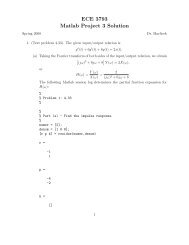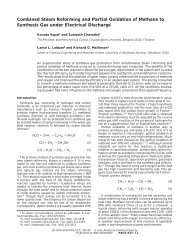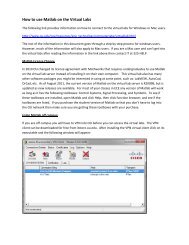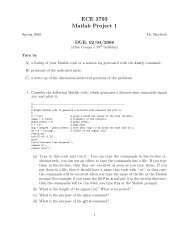Download self-assembled monolayers lecture
Download self-assembled monolayers lecture
Download self-assembled monolayers lecture
You also want an ePaper? Increase the reach of your titles
YUMPU automatically turns print PDFs into web optimized ePapers that Google loves.
High-Surface<br />
Mesoporous Supports<br />
• The unique mesoporous oxide supports provide high surface area<br />
(>900 m2/g), thereby enhancing the metal loading capacity. They also<br />
provide an extremely narrow pore size distribution, which can be<br />
specifically tailored from 15 Å to 400 Å, thereby minimizing<br />
biodegradation from microbes and bacteria. Mesoporous structures can<br />
be disposed of as stable waste forms.<br />
The porous supporting materials used in this research (SiO2, ZrO2,<br />
TiO2) are synthesized through a co-assembly process using oxide<br />
precursors and surfactant molecules.12-15 The material synthesis is<br />
accomplished by mixing surfactants and oxide precursors in a solvent<br />
and reacting the solution under mild hydrothermal conditions. The<br />
surfactant molecules form ordered liquid crystalline structures, such as<br />
hexagonally ordered rod-like micelles, and the oxide materials<br />
precipitate on the micellar surfaces to replicate the organic templates<br />
formed by the rod-like micelles. Subsequent calcination to 500°C<br />
removes the surfactant templates and leave a high surface area oxide<br />
skeleton. The pore size of the mesoporous materials is then<br />
determined by the rod-like micelles, which are extremely uniform. Using<br />
different chain length surfactants produces mesoporous materials with<br />
different pore sizes.










